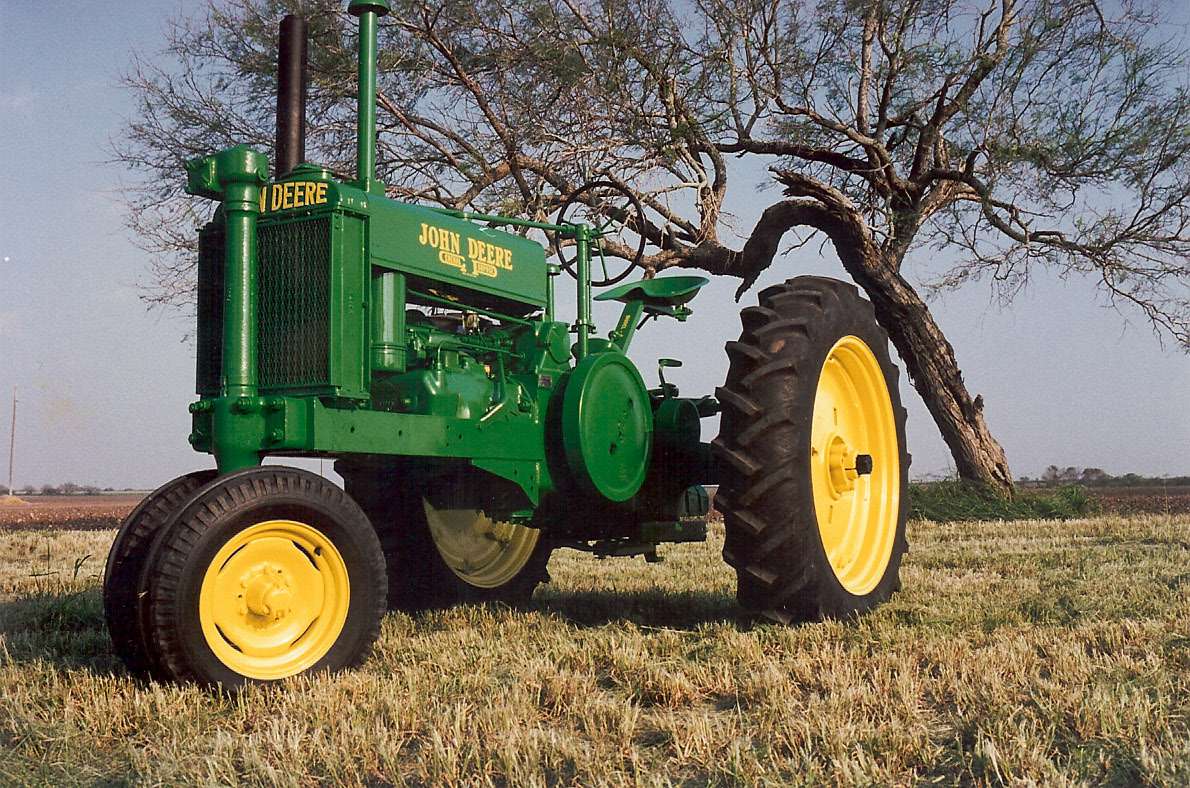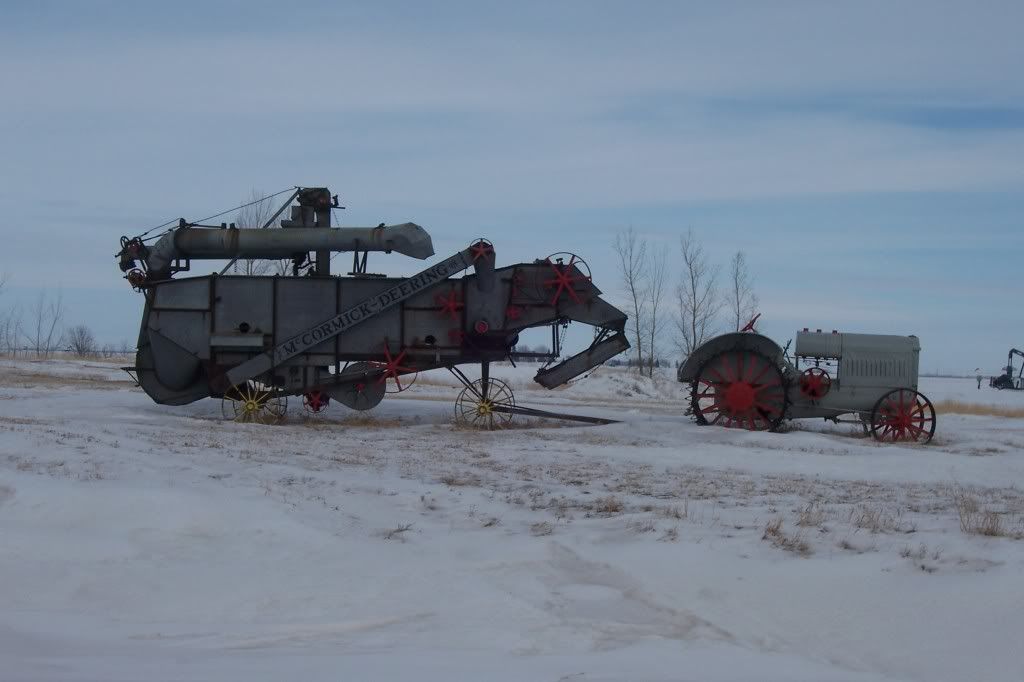Canyon has posted pictures of not only unique tractors but some beautiful restorations. Tractor restorations are not unlike automobile restorations. Obviously there’s not as much sheet metal work (unless it’s a Moline UDLX) but that doesn’t mean there isn’t an equivalent attention to detail. Here is an example of a thorough restoration of a John Deere 1940 Model G. As I stated on page 1 this is the first tractor my grandfather bought new. He died at the age of 45 in 1954. After his passing my grandmother continued to farm until 1990. Not long after she retired from farming she let me have this family tractor. The restoration was done over almost 3 years. It really shouldn’t have taken that long but in the mean time I tinkered with other tractors, got married, and did a lot of stuff young guys do besides get greasy in the barn all night. It’s a lot of work but very fulfilling.
Here is the tractor as it set until the early ‘90s. I believe it set in and out of sheds since the ‘60s wherever my grandmother had room for it around her farm.

After I got it home and started disassembling it the work ahead came evident. Here we are looking up into the cylinders at the pistons with the head removed. You can see where the water sat at various levels in at least one cylinder; evidence the tractor sat outside a good bit of time.

Here we are in the barn with the block removed. You can see the rod journal on the crankshaft in the main case. Some parts are starting to be sandblasted and painted. You can see the engine block sitting on the workbench. The piston skirts go up into the crankcase.

Upskirt picture of the final drives here.

With the engine reassembled and sealed up tight it’s time for sandblasting the main case. Of course there are also tons of other smaller parts being sandblasted or run through the glass beading cabinet.

I took some sheet plastic and fabricated a paint booth in the shop. Lots of these parts were painted in stages so now they’re sanded and getting ready to paint the whole tractor at one time for an even finsh.

All painted.

Two piece spark plugs - don’t see that much anymore. The compression relief cocks had to be opened to start the engine. The G was the hoss of the 2 cylinder line in 1940 – you weren’t turning it over without opening the petcocks. Darn sure not after an overhaul.

This picture was taken sitting just outside the barn where I picked the tractor up three years earlier. I restored the tractor with rubber tires just like I found it. I don’t know when my grandfather or grandmother took the steel wheels off.
For those unaware – to start a hand-crank 2 cylinder John Deere you turn that flywheel on the side. As you've seen in previous pictures the cylinders lay side-by-side facing the front of the tractor and the crankshaft traverses the direction of travel. This makes the transmission/final drives simple as there is not a 90 degree change in the direction of force as there are with other tractor’s differentials. The flywheel doubles as a starting crank.

In ’95 I loaded some tractors on the drop deck and hauled them to Burton for the Cotton Gin Festival. That’s me on the trailer and my friend on the ground, he has a JD Model H up there in front of my G. I also took a JD L and Farmall F-30.
Used to be fun to do that sort of thing and it wasn't much trouble to do it. Not now. DOT is such a pain they've taken all the goodies out of running your own trucks. You can't tell from that picture but I was probably a public nuciance because my washer fluid was low. If not I know those straight pipes made me public enemy #3.

NOW we’re cooking with gas. On a buying trip to Iowa my Dad and I stumbled on a set of 24x5 steel fronts for a G. These have a 5” face not the 4” that was much more common for A’s. That got me halfway to the way JD originally equipped the tractor. Later I answered an ad in ‘Green Magazine’ for some wheels in Eaton Rapids, MI. The price was high enough and I was going to say ‘I’ll think about it’ when the fellow said ‘you know I have a whole trailer load of stuff going to Houston for another Texan’. So I bought them and then contacted the fellow Texan who very kindly brought my wheels as far as Houston on his TUGBOAT that was going up down the Mississippi. What at trip they took to get to South Texas. These wheels are NOT something you want to run over your toe with. In fact they are dangerous in more ways than one. Driving up ramps onto trailers is OUT unless they are planked with soft pine; even then it is risky and best done on low trailers. Winches are the safest way to load them. Steel on steel is like working on glass - these wheels are terribly unforgiving. As far as that goes, old tractors are terribly unforgiving. The same things that could kill you in 1940 still can today. We've just mitigated the risk by reducing the exposure.

[This message has been edited by Centerpole90 (edited 5/1/2012 12:11a).]





































